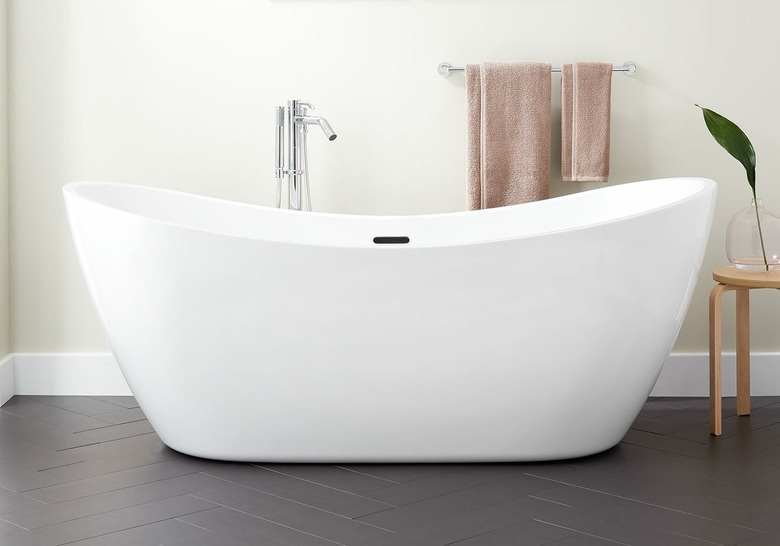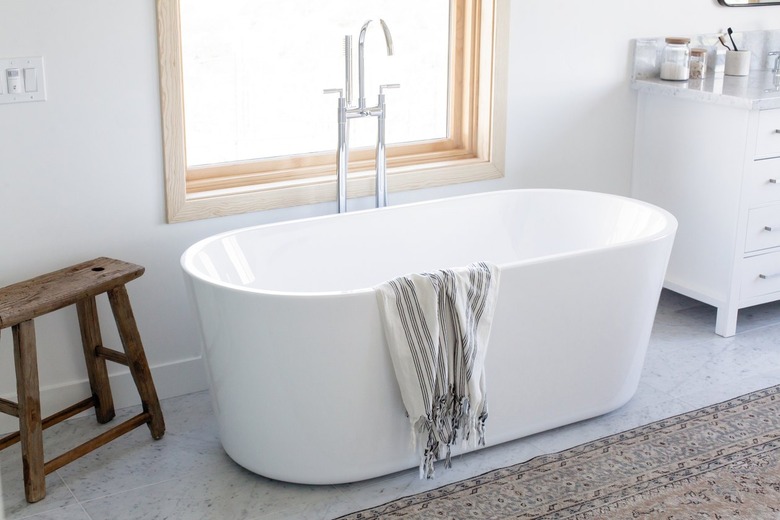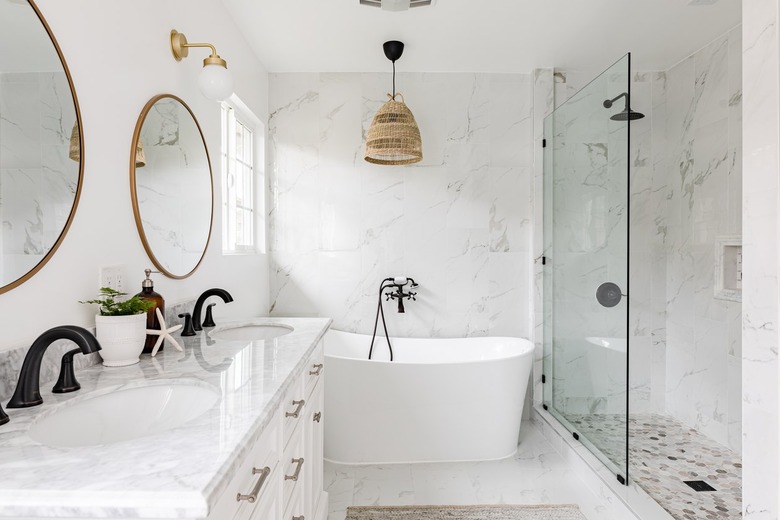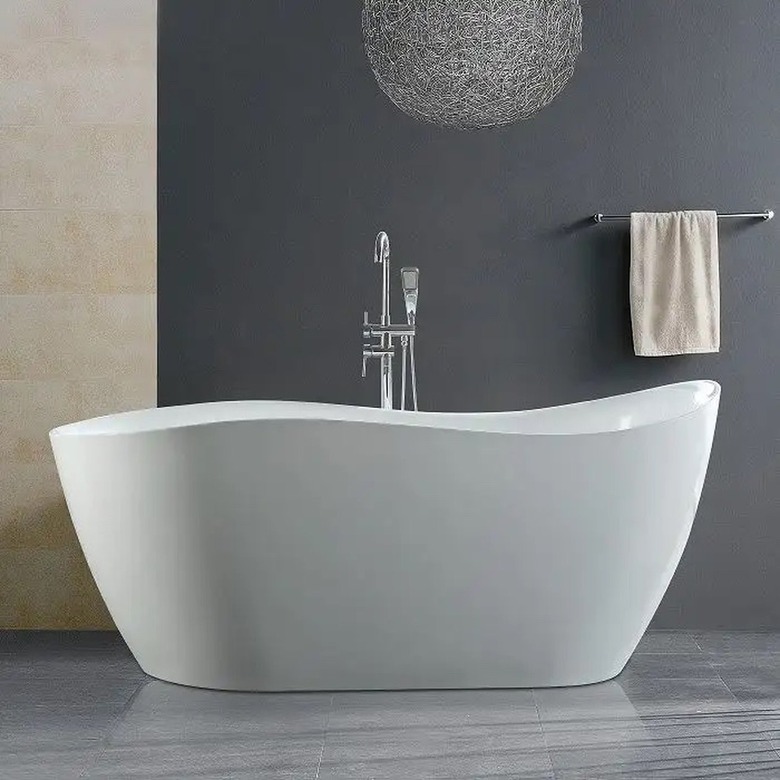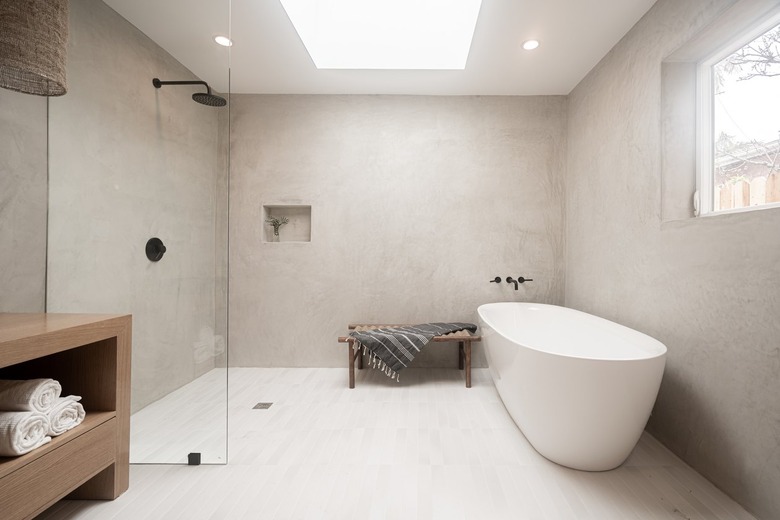What Is A Garden Tub? Here's Everything You Need To Know
We may receive a commission on purchases made from links.
Deep, luxurious garden tubs add a glamorous touch to your bathroom. The extra space in a garden tub makes your baths more comfortable, but, of course, not all garden tubs are created equal. They come in a wide range of shapes and sizes, which can make it easier to find one that fits your space.
Here's everything you need to know about a garden tub — and whether or not it's right for your bathroom.
What Is a Garden Tub?
What Is a Garden Tub?
A garden tub is simply a freestanding bathtub that is wider, deeper, and longer than a traditional bathtub in a bath/shower combo. But a garden tub isn't only bigger — it is also designed with beautiful features and shapes, from thick porcelain pedestal tubs to triangular-shaped tubs with waterfall features.
The term "garden tub" stems from tubs created in 18th-century Europe, when wealthy bathers preferred to lounge in warm bathwater in large tubs nestled in their rolling manicured grounds. The wide tubs found their way indoors in wealthy homes by the 19th century, and their popularity hasn't waned since. Other names for a garden tub include soaking tub, free-standing tub, and oval tub.
Standard Garden Tub Size
Standard Garden Tub Size
Generally speaking, a basic garden tub is 24 inches deep and 60 inches long with a width of 42 inches. They can reach up to 70 inches long or more and have a depth of about 40 inches. The standard tub size is usually not more than 30 inches across and around 50 to 60 inches long. The standard tub depth is generally 14 to 20 inches.
Shapes of Garden Tubs
Shapes of Garden Tubs
Because the garden tub can be freestanding, manufacturers have taken liberties with the design. Garden tubs are often seen with curves, steps, and even waves to make them truly stand out in a bathroom. A well-designed garden tub raises the aesthetics of the room as well as the comfort of the bathers.
Garden Tub Materials
Garden Tub Materials
Garden tubs typically are made of enameled cast iron or acrylic. However, you'll generally see garden tubs made of enameled cast iron. This is preferred for its heat retention, clean look, and ease of washing.
A less expensive but still stylish choice is the acrylic garden tub. The acrylic tub material allows for dips and swirls in the design of the garden tub. While it will have a more unique look compared to a cast-iron model, acrylic can scratch and is harder to keep clean over time. It also doesn't hold heat as long or as well as cast iron.
The Pros and Cons of a Garden Tub
The Pros and Cons of a Garden Tub
Pros of a Garden Tub
- Allows you to be completely submerged
- Elevates your bathroom aesthetic
- Enameled cast iron tubs hold heat longer
Cons of a Garden Tub
- More expensive than a typical alcove tub
- Heavier to lift into the bathroom
- Might require a plumbing reconfiguration
A garden tub allows you to truly get in a good soak. There is no need to worry about knees sticking up above the bubble line or feet reaching out over the edge. Being fully immersed in a pool of warm water can relieve minor muscle aches, treat common skin ailments, and provide relief for sinus issues.
However, garden tubs aren't without their cons: You will typically need a bigger bathroom to accommodate for the size of the tub. You may even need to reconfigure your plumbing, which can get expensive.
What to Know Before Installing a Garden Tub
What to Know Before Installing a Garden Tub
The size and depth of a garden tub can make it more challenging to install than a standard tub. Before you (or a professional plumber) do the installation, make sure you have plenty of space to safely get in and out of the deeper garden tub.
Some garden tubs models are jetted tubs, which require a pump unit that may or may not fit in the fixture depending on its design. If you have a garden tub with a slim profile, a pump unit may need to be placed within 5 feet from the tub in order for it to work properly. However, it can be hidden in a closet or cabinet.
